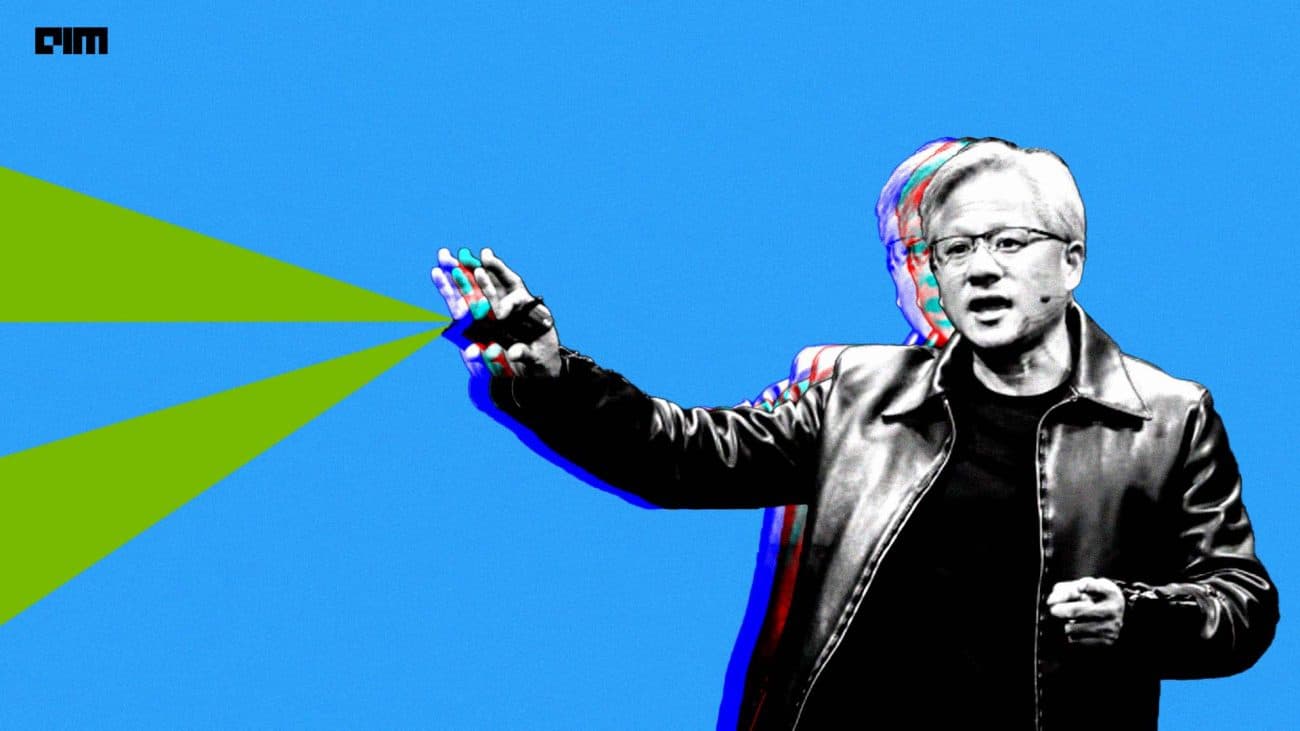If last year’s GTC was a pop concert, this year’s event felt like the Super Bowl of AI, said NVIDIA chief Jensen Huang. Only this time, there are no losers, just winners.
“I’m up here without a net—there are no scripts, there’s no teleprompter, and I’ve got a lot of things to cover,” he quipped. The event was attended by over 25,000 in-person attendees, while 3,00,000 joined virtually. This prompted Huang to joke that the only way to accommodate more people at GTC was to physically expand the size of San Jose, where the event was held.
This year, Huang, unfazed by DeepSeek’s impact, only means business.
“The entire world got it wrong—the computation requirement and the scaling law of AI are more resilient and, in fact, hyper-accelerated. The amount of computation we need at this point, as a result of agentic AI and reasoning, is easily a hundred times more than we thought we needed this time last year,” Huang claimed.
Huang emphasised the shift from “retrieval computing” to “generative computing”, where AI generates answers based on context. He introduced “agentic AI”, which involves AI perceiving, reasoning, and planning actions. Huang introduced the open Llama Nemotron family of models, which are equipped with reasoning capabilities.
According to him, this evolution, coupled with “physical AI” for robotics, has significantly increased computation needs.
Building on this, Huang announced that NVIDIA’s Blackwell architecture is now in full production, delivering 40 times the performance of Hopper. The Blackwell architecture boosts AI model training and inference, improving efficiency and scalability.
Notably, Blackwell Ultra is set to hit systems later this year, but the real powerhouse is coming soon. Named after an American astronomer known for her research on dark matter, Vera Rubin is NVIDIA’s next-generation GPU and is expected to debut in 2026. Huang added that the Rubin chips will be followed by Feynman chips, which are slated to arrive in 2028.
To accelerate large-scale AI inference, Huang introduced NVIDIA Dynamo, an open-source platform that powers and scales AI reasoning models within AI factories. “It is essentially the operating system of an AI factory,” Huang said
Comparing Blackwell with older Hopper GPUs, Huang said, “The more you buy, the more you save. But now, the more you buy, the more you make.” He even joked that when Blackwell hits the market, customers won’t be able to give away Hopper GPUs and encouraged them to buy Blackwell.
He further quipped that he is the ‘chief revenue destroyer’ as his statement might alarm his sales team, discouraging customers from purchasing remaining Hopper inventory. Ultimately, he stressed that technology is advancing so rapidly that buyers should invest in the latest and most powerful options available rather than settling for older models.
Moreover, he expects data centre revenue to reach one trillion dollars by the end of 2028. “I am fairly certain we’re going to reach that very soon.”
NVIDIA is not just about big data centres. The company also unveiled two new supercomputers, DGX Spark and DGX Station, powered by the Grace Blackwell platform, allowing AI developers, researchers, and students to prototype, fine-tune, and run large models on desktops.
Cute Disney Robots on the Way
Huang is all in on robotics and is convinced that physical AI is the next big thing. On stage, he was joined by ‘Blue’, a small AI-powered robot resembling Disney’s Wall-E. He also introduced Newton, an open-source physics engine for robotics simulation developed in collaboration with Google DeepMind and Disney Research.
Not stopping there, NVIDIA unveiled Isaac GROOT N1, the world’s first open Humanoid Robot foundation model. If that wasn’t enough, Huang also announced NVIDIA Isaac GR00T Blueprint, a system that generates massive synthetic datasets to train robots—making it way more affordable to develop advanced robotics.
NVIDIA’s physical AI experience extends to autonomous vehicles. General Motors announced it will work with NVIDIA to optimise factory planning and robotics. Moreover, GM will use NVIDIA DRIVE AGX for in-vehicle systems to support advanced driver-assistance systems and enhanced safety features.
Huang also mentioned the importance of safety in Autonomous Vehicles (AVs) and launched NVIDIA Halos, a comprehensive safety system for AVs. It integrates NVIDIA’s automotive hardware and software safety solutions with AI research to ensure safe AV development from cloud to car.
While AI remains a priority, NVIDIA is now focusing on quantum computing. It will host its first Quantum Day on March 20—an interesting move considering Huang once claimed that “quantum computers are still 15 to 30 years away”.




























